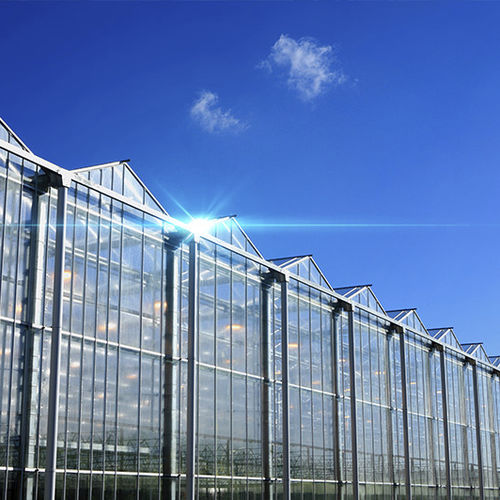In an era marked by increasing concern for sustainable practices and food security, the agriculture industry has been actively seeking innovative solutions. One such remarkable breakthrough is the advent of Venlo greenhouses. These structures have revolutionized the way we grow crops, offering a myriad of benefits that have captivated farmers, environmentalists, and policymakers alike.
Understanding Venlo Greenhouses
Venlo greenhouses are advanced structures specially designed for optimal plant growth and cultivation. They derive their name from the city of Venlo in the Netherlands, where they were first developed. These greenhouses are renowned for their unique architectural design, characterized by a high roof and steeply pitched glass or polycarbonate walls. The distinct shape allows maximum light penetration, creating an ideal environment for plants to thrive.
Advantages of Venlo Greenhouses
Energy Efficiency

The design of Venlo greenhouses optimizes energy usage. The sloping glass or polycarbonate walls facilitate excellent light transmission, reducing the need for artificial lighting. Additionally, the structures are equipped with efficient insulation, minimizing heat loss during colder months. These features significantly reduce energy consumption, making Venlo greenhouses environmentally friendly and economically viable.
Climate Control
Venlo greenhouses employ advanced climate control systems. They incorporate automated ventilation, heating, and cooling mechanisms that maintain optimal temperature, humidity, and airflow inside the structure. This precise control allows year-round cultivation of crops, independent of external weather conditions. The ability to create a tailored microclimate ensures higher crop yields and increased production efficiency.
Disease and Pest Management
Venlo greenhouses provide an effective barrier against pests and diseases. The controlled environment prevents the entry of insects, birds, and larger animals that may damage crops. Additionally, the sealed structure minimizes the risk of airborne pathogens, reducing the need for chemical pesticides and creating a healthier and safer crop production system.
Water Conservation
Venlo greenhouses conserve water through efficient water management systems. These greenhouses incorporate advanced irrigation techniques, such as drip irrigation or hydroponics, which deliver water directly to the plant roots, minimizing wastage. Furthermore, water runoff is collected, filtered, and recycled, ensuring a sustainable and water-efficient cultivation process.
Increased Crop Quality and Quantity
The controlled environment inside Venlo greenhouses allows for precise cultivation practices. Farmers can adjust light levels, temperature, and humidity to optimize growth conditions, resulting in improved crop quality, uniformity, and yield. Moreover, the protection from external factors like extreme weather events ensures consistent production, leading to a reliable and steady supply of high-quality produce.
Disadvantages of Venlo Greenhouses
Cost
Venlo greenhouses can be expensive to construct and maintain compared to other greenhouse designs. Additionally, the need for the advanced technology and automation systems that are normally used in them can further increase the overall cost.
Energy Consumption
Maintaining the controlled environment inside Venlo greenhouses requires energy, particularly for heating, cooling, and lighting. Energy consumption can be substantial, especially in regions with extreme climates. The reliance on artificial lighting for year-round cultivation can significantly contribute to energy consumption and costs.
Maintenance and Repairs
The complex design of Venlo greenhouses can make maintenance and repairs more challenging. The large roof structure with movable panels and the extensive glass or polycarbonate panels requires regular inspection, cleaning, and occasional replacement. Repairing damage or leaks in the structure can be time-consuming and costly.
Limited Flexibility
The traditional design of Venlo greenhouses may offer limited flexibility in terms of adapting to specific crop requirements. The straight sidewalls and fixed roof pitch may not be suitable for crops with specific height or spacing needs. This can limit the diversity of crops that can be grown efficiently within the greenhouse.
Environmental Control
While Venlo greenhouses provide good ventilation and climate control, extreme weather conditions can still pose challenges. Severe storms, high winds, or heavy snowfall can potentially damage the structure or cause disruptions in the controlled environment. Protecting the greenhouse from external elements requires additional measures and investments.
Land Utilization
Venlo greenhouses are space-efficient, but they still require a substantial amount of land for installation. In areas where land availability is limited or costly, establishing large-scale Venlo greenhouses may not be feasible.
8 Fun Facts About Venlo Greenhouses
Venlo greenhouses are named after the Dutch town of Venlo, where they were first developed in the 1920s. They have since become one of the most popular greenhouse designs worldwide.
The design of Venlo greenhouses features a combination of a high, arched roof and straight sidewalls, forming a gable-like shape. This design maximizes sunlight exposure and provides optimal growing conditions for plants.
Venlo greenhouses are typically made of aluminum or galvanized steel frames with glass or polycarbonate panels. These materials offer durability, light transmission, and insulation for maintaining a controlled environment.
These greenhouses are known for their excellent ventilation system. The roofs of Venlo greenhouses can be opened to allow for natural airflow, helping to regulate temperature, humidity, and carbon dioxide levels.
Venlo greenhouses are highly efficient in terms of space utilization. The straight sidewalls allow for easy installation of benches and racks, maximizing the cultivation area and providing an efficient layout for plant arrangement.
The design of Venlo greenhouses allows for easy expansion. Additional bays can be added to the existing structure, making it convenient for growers to scale up their operations as needed.
Venlo greenhouses are versatile and can accommodate a wide range of crops, including flowers, vegetables, fruits, and herbs. They provide an ideal environment for year-round cultivation, regardless of external weather conditions.
Venlo greenhouses have a significant impact on commercial horticulture. They enable growers to extend growing seasons, increase crop yields, and maintain consistent quality, contributing to the availability of fresh produce throughout the year.
Related Articles & Free Email Newsletter Sign Up
A Flat Arch Greenhouse Offers Efficiency and Versatility
Gable Greenhouses Offer Lots of Growing Space and Structural Stability
Gothic Style Greenhouses Add a Touch of Historical Beauty to a Property



Comment here